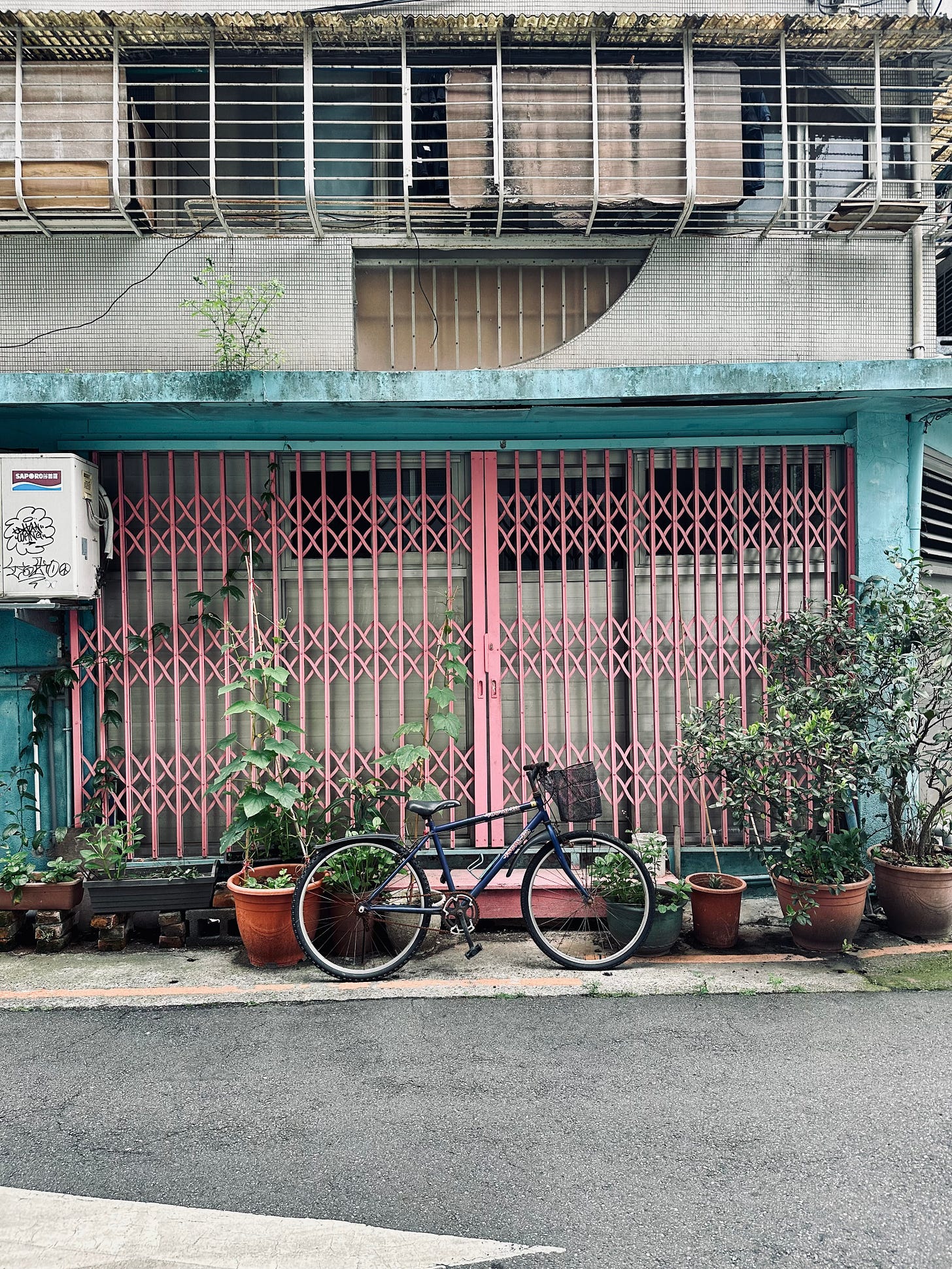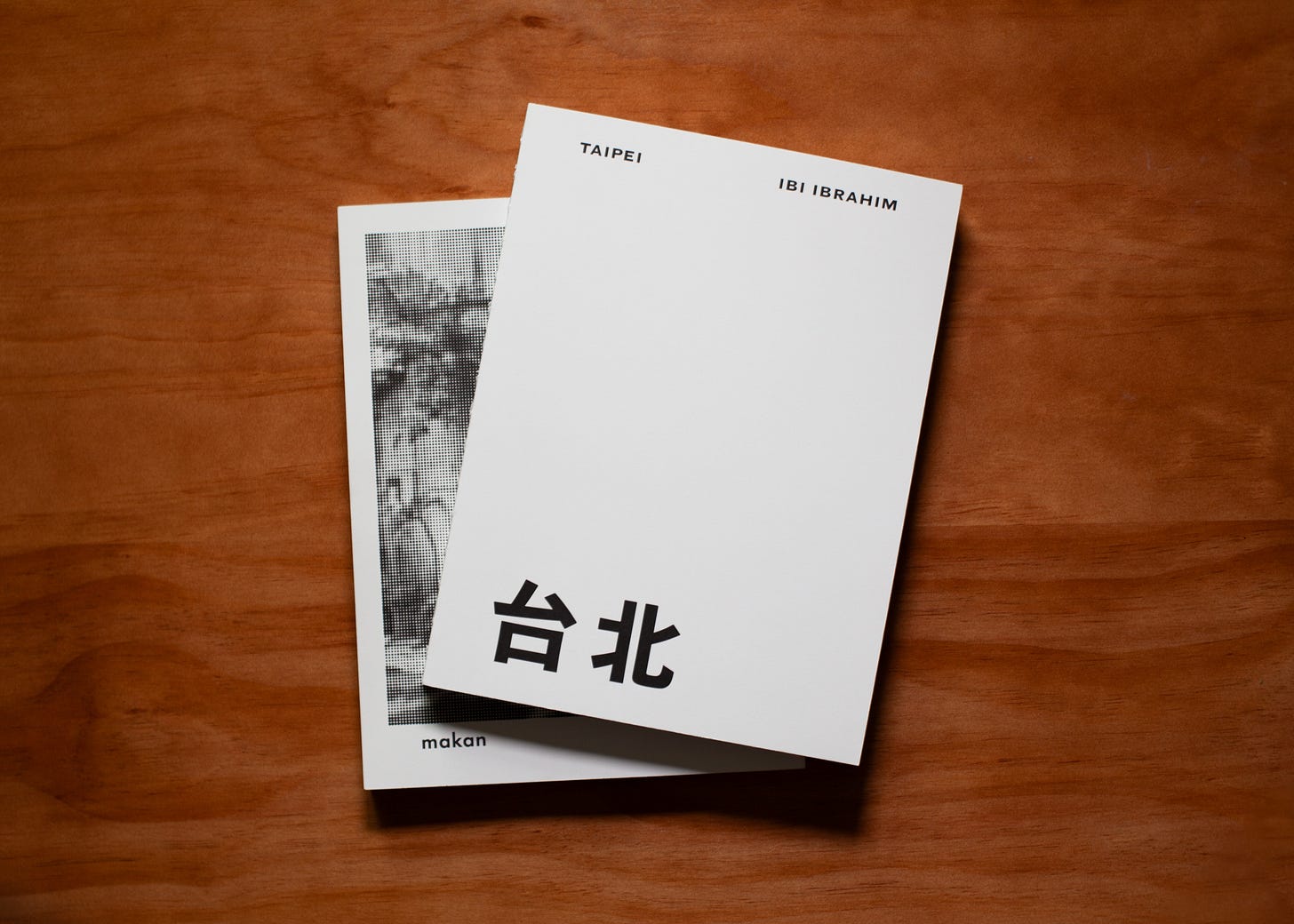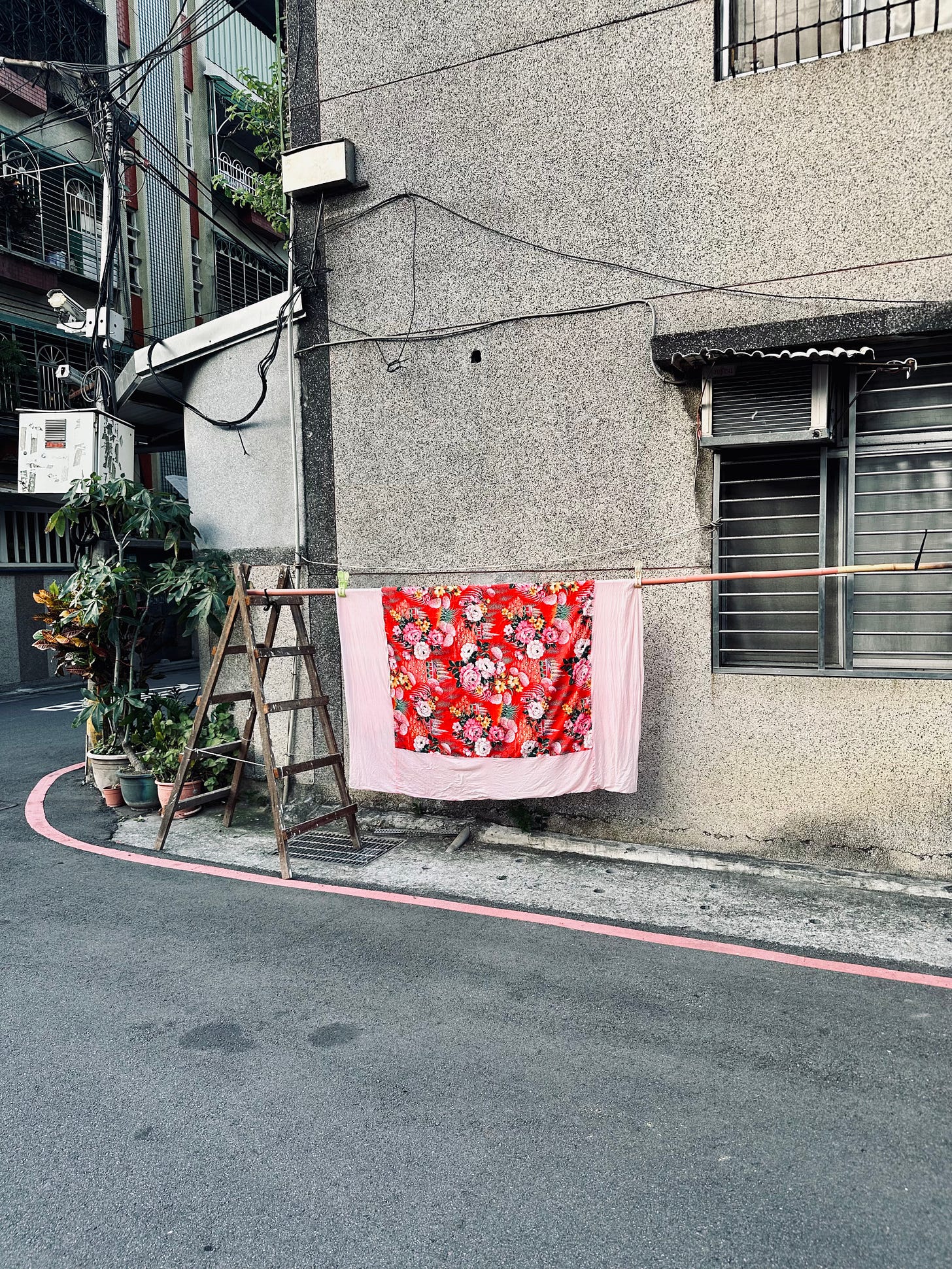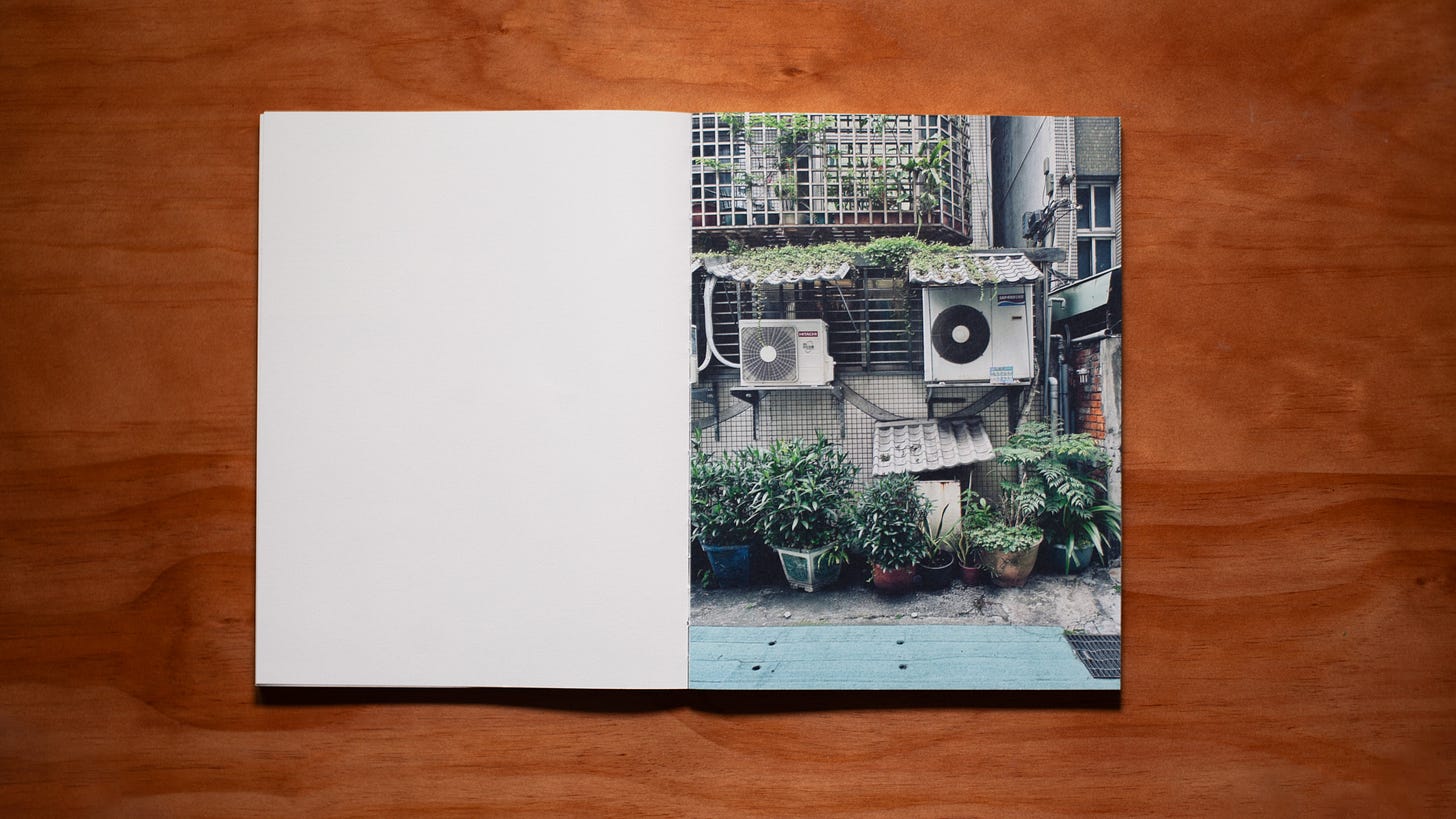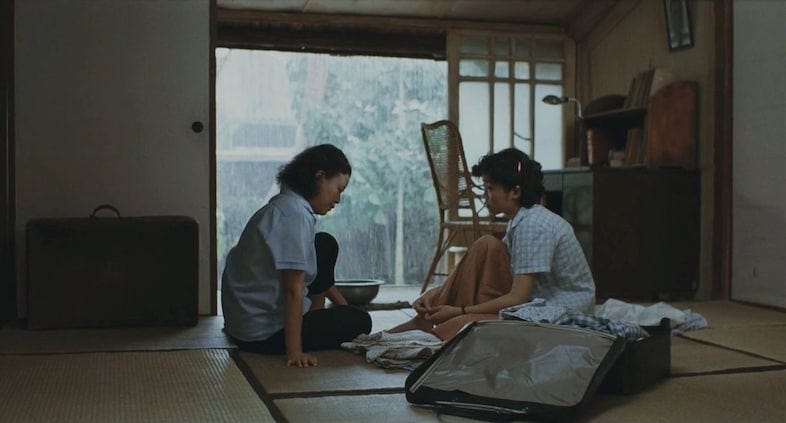This is Studio Notes, a series of letters exploring the things on my desk—cultural references, firsthand research, and archival material—all in relation to how we tell stories, create spaces, and design products at Yun Hai.
It’s written for paid subscribers of Yun Hai Taiwan Stories, an otherwise free newsletter about Taiwanese food and culture by Lisa Cheng Smith 鄭衍莉, founder of Yun Hai. If you aren’t yet a subscriber, sign up here. If you’d rather trade words for words, just reply to this email.
First of all, Happy Pride! As proud supporters of Taiwan and LGBTQ+ rights in Taiwan and worldwide, we’re stocking Taiwan pride pins and flags that support the Taiwan Equality Campaign and Taiwan Pride in NYC. For more on this topic, read last year’s newsletter: 台灣驕傲: Taiwan Pride and Tongzhi Diplomacy.
This week, I'm overjoyed to introduce TAIPEI, a new photo book by visual artist Ibi Ibrahim—a friend of the shop and devoted student of Taiwanese culture. We’re proud to be a retail partner for this new book exploring the quieter side of the Taipei urban landscape. Ibi’s book directly references Taiwanese filmmaker Edward Yang, so I spend some time on the origins of the Taiwanese New Wave movement and its lasting influence on people like Ibi and myself. Finally, I include a roundup of favorite book, photography, and printed matter shops and resources in Taiwan, because print’s not dead, print’s not dead.
And! Our shop is turning three! We're celebrating with Ibi's book launch, Yun Hai block party style. Join us tomorrow, Thursday, June 5th from 6-9pm at 170 Montrose Ave in Brooklyn. The Lion Dance starts at 7—don't miss it.
I first met Ibi Ibrahim, a Yemeni-American visual artist, in April of 2023. We had been discussing a potential Yun Hai project and happened to be in Taipei at the same time, so we met up in the common area of my hostel (Star Hostel, so good, please stay there, newsletter about Taiwanese hostel culture must come soon). I don’t have a photo of us—now I always demand a selfie—but I did take a photo of the setting. It was vaulted, well-lit, cozy, and raining outside. I think we felt immediately at home there and with each other.
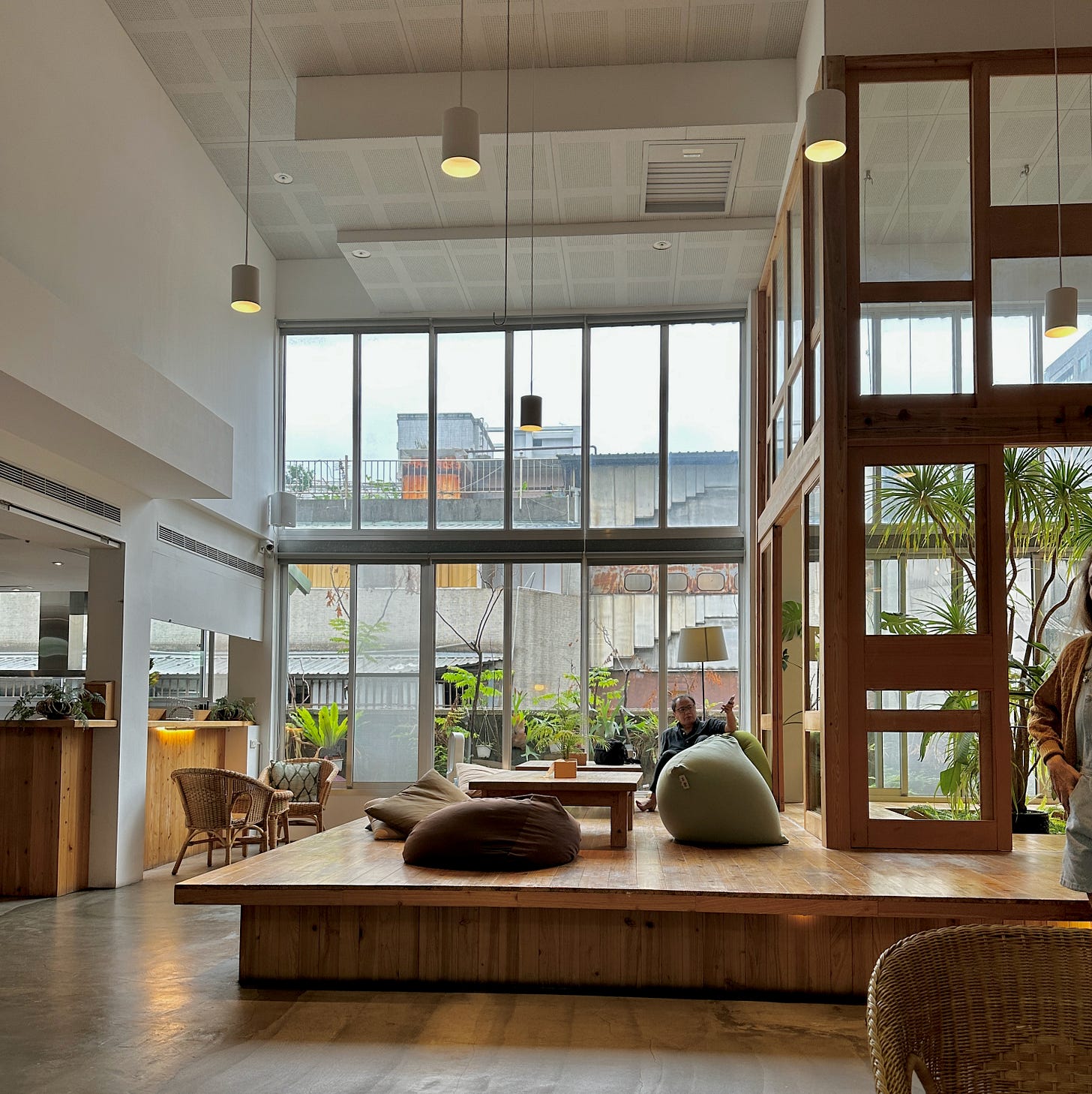
I was in Taipei after many years away, reorienting myself to flourishing Taiwanese public life after the doldrums of the pandemic in the United States. He was there studying Mandarin by himself in Taipei for a month, immersing himself in the city, language, and culture of his partner, who was born and raised in Taipei.
From a text exchange with Ibi regarding his experience:
The desire to be in Taipei was the first and strongest thing in all of this—learning mandarin came second. I recall that I had an opportunity to start learning here in New York but I was adamant about building my foundational knowledge of Mandarin in Taipei and nowhere else.
I began mapping all the shops, cafes and restaurants near my language school way before I made it to Taipei — there was this excitement to just be there. I recall taking a 16 hour direct flight, landing in Taipei at 6am, going into my Airbnb for a quick shower then a stop at FamilyMart for coffee & snack and off I went to my first day of class in Da’an at 9am
From the first few hours of being there, I was walking, seeing, eating and just falling in love with the city
It was a pattern. It never stopped
I immediately recognized the sublime feeling of being set loose in Taipei for the first time (every time feels like the first time), especially as a newcomer to the culture. I’m an outsider: half-Taiwanese, raised in the United States, and on a constant and all-consuming journey to document, understand, live, and breathe Taiwan. Ibi and I share this.
He told me he was taking photos on morning walks to language class, and that he was looking for the essence of Taiwan in the mundane and quiet details, which he first saw in the cinematography and storytelling of Taiwanese New Wave filmmaker Edward Yang, who made use of contemplative, sparsely populated urban spaces as a backdrop for cross-generational dramas and coming-of-age stories.
We never ended up working together—he went on to a program at the International Center of Photography and then to establish a book imprint called Makan, “an artist-run photo book publication house that aims to support the work of immigrant artists and those from countries of conflict and beyond.” His first book, Photography from Yemen, is an anthology of works from his home country.
The second is TAIPEI, a love letter and homage to Taipei and, consequently, his Taiwanese partner, who also designed the book. It’s a quiet, meditative collection of the photographs he mentioned to me, taken on that trip in 2023 and a second one in 2024.
Ibi has chosen to work with independent booksellers and shops to launch this title. Yun Hai is proud to be a retail partner online and in New York City — we’re having a party tomorrow to celebrate (and it also happens to be Dragon Boat Festival and our third anniversary)! Please join us at the Yun Hai Gamadiam from 6-9 pm on June 5th if you’re in the area.
TAIPEI by Ibi Ibrahim
Taipei doesn't have a reputation for being a quiet city. But it is, at least in the early mornings. Ibi’s collection of pictures captures quiet urban landscapes on daybreak walks, reflecting a more peaceful side. The artifacts of everyday life appear haphazardly left, but are positioned just so—specifically and significantly—by recent use, a break in the routine, or in preparation for what's next.
Each image has the quality of a stage, waiting for its actors. For a more evocative reading, overlay the scene with the imagined sounds of the location: a distant temple chant, the sound of doves, a low micro-clamor of shops beginning to open, old Mandopop on tinny speakers.
Ibi’s work, and his perspective as a visitor, bring focus to the texture of everyday life in Taipei. Laundry is hung outside on a pole propped on a wooden ladder—the crisp, pink color of a quilt provides stark contrast to the worn patina of the concrete streets. A lone bicycle stored between traffic barriers against a row of potted greenery is obscured by tarps and car mats that take on the form of a scarecrow rider, when you squint. Everywhere are signs of use, life, urbanity, and domesticity.
The book itself is fantastically minimal, printed on toothy white paper with a lay-flat binding, absent of text except for the inner cover, which describes in beautiful form what Ibi has discovered in Taipei through Taiwanese cinema, first hand experience, and reflection back on his own hometown in Yemen.
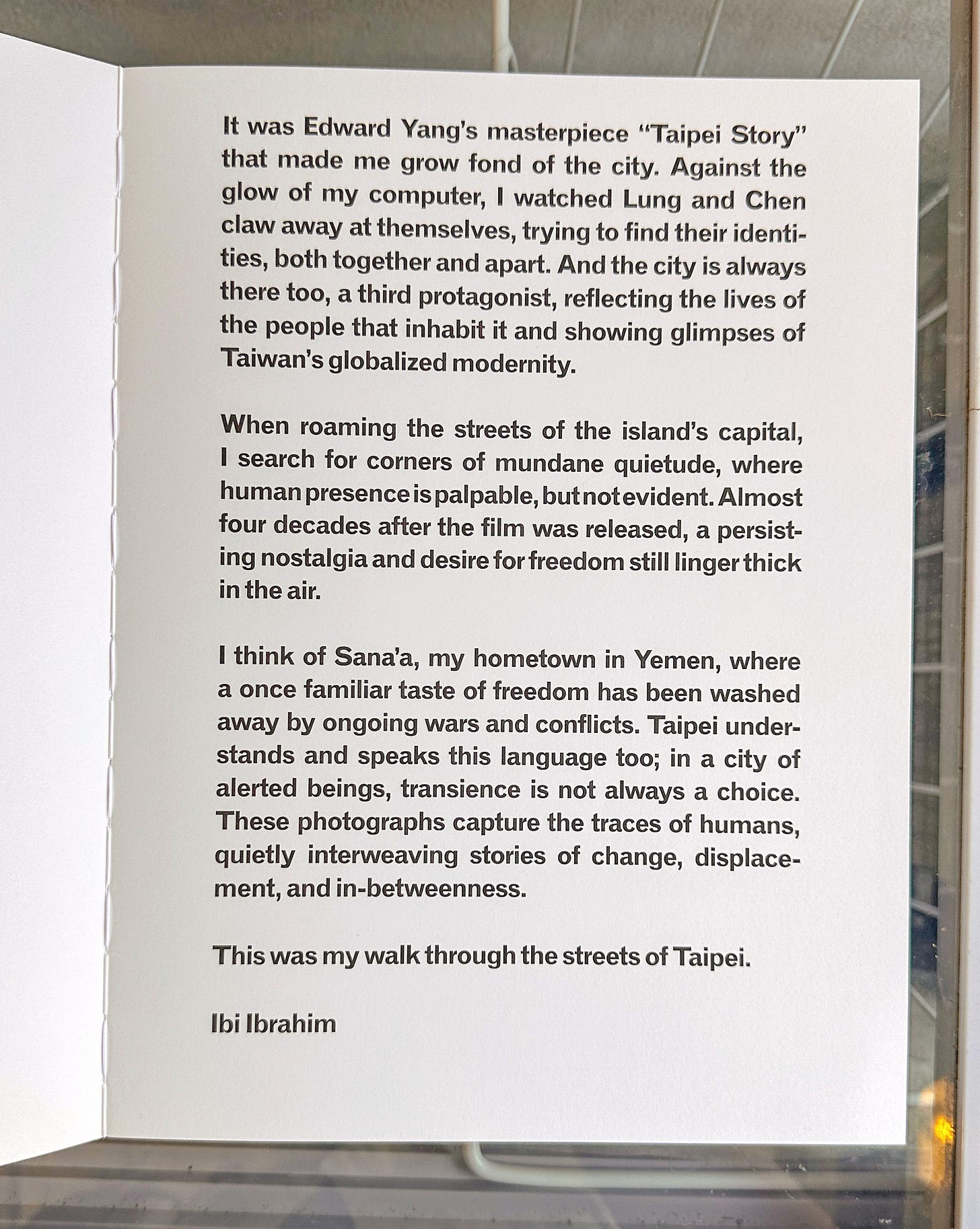
Here’s the trailer for Taipei Story, the film Ibi references in his text. The styling and wardrobe of the lead actress, Tsai Chin, reminds me so much of my own mother in this era.
From Ibi:
In the opening text of my monograph Taipei, I acknowledge Edward Yang and his influence on me, his masterpiece film Taipei Story, and the fondness it grew in me for Taipei.
Years later, I find myself in the island’s capital roaming the streets, searching for corners of mundane quietude. In my morning walks to Mandarin language class, I find the freedom to photograph those corners. This is a freedom that I lost in photographing in Sana’a, my hometown in Yemen. Sana'a, a city of unconventional beauty, is now a place where death is a morning ritual – where a once-familiar taste of freedom has been washed away by ongoing war and conflicts. Taipei understands and speaks this language too; in a city of alerted beings, transience is not always a choice. Those photographs capture the traces of humans, quietly interweaving stories of change, displacement and in-betweenness.
There is more to the story than Edward Yang and his masterful work. This book is also my own love story with a person who called Taipei their home. Today, as I flip through these pages, I am reminded of the journey I took in searching for a remnant of myself in the world that belongs to the person I love. I am reminded of the deeper understanding of place, self and experiences that shaped me.
I’ve been a practicing artist for over fifteen years. I work in a world where projects are organized by purpose, goals, and dates. This was never the case for this book. I never intended to make these photographs with the purpose of creating a monograph, and I am fortunate that it all happened by chance.
Today, I look at this book as a testament of love.
May it always be my map back to myself.
You can find his book online and in our brick and mortar. For the next project from his imprint Makan, Ibi is working with a Taiwanese artist. You can bet we’ll be sharing that when it’s ready, too.
The Origins of Taiwanese New Wave Cinema
Like Ibi, these films have influenced the work that I do at Yun Hai, and how I perceive Taiwan’s past and present. They’re the primary reason I play doo-wop or 1950s American rock and roll at the store—it's the soundtrack of the modernization of Taiwan. Here’s a Spotify playlist I sometimes throw on, a compilation of music used in Yang’s films.
I was a bit late in coming to Taiwanese New Wave—so busy as an eighteen-year old thinking Wong Kar-wai and Sofia Coppola were the world entire that I missed the theatrical release of Yi Yi completely. Through my twenties and thirties, I started seeking out these films at their sparse screenings throughout the US: City of Sadness, Taipei Story, Yi Yi, a Brighter Summer Day, and (one of my favorites) Millennium Mambo. Now, streaming makes it much easier to enjoy these, but there’s nothing like a projection of the print.
On the occasion of the release of TAIPEI, I thought it would be nice to put together a short history on the origins of this influential movement.
In 1982, the anthology film In Our Time was released by the Central Motion Picture Company of Taiwan (CMPC) to Taiwanese audiences. This omnibus featured four new Taiwanese directors—Tao Te-Chen, Edward Yang, Ko I-Chen, and Yi Chang—and transformed both the Taiwanese film industry and the international understanding of Taiwan on screen. It was a sea change from the escapist, sentimental melodramas that defined Taiwanese popular cinema throughout the 60s and 70s to a naturalist exploration of the struggles and interiority of daily life in rapidly modernizing Taiwan (including agrarian nostalgia, Japanese colonial architecture, and American rock and roll as a backdrop).
Here’s the trailer, opening with a beautiful scene set to Santo & Johnny’s Sleepwalk:
CMPC, Taiwan's only comprehensive film production company at the time, was government controlled, growing out of the merger of the Agricultural Education Film Company and Taiwan Film Corporation Limited; both originally operated as arms of Taiwan's propaganda apparatus. That they would have sponsored such an important work of independent-minded Taiwanese cinema is hard to imagine, though it really did happen.
The way Taiwanese film evolved maps to the way that society slowly liberalized over three decades, from martial law to democracy. In the 40s and 50s, film production focused largely on government propaganda, but as things stabilized cross-strait, they shifted to popular Taiwanese language melodramas and kung-fu flicks. As Hong Kong new wave cinema picked up speed in the 1970s, Taiwanese films struggled to compete.



